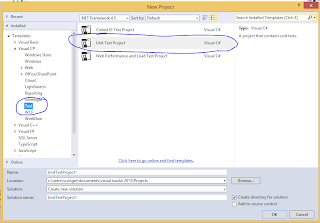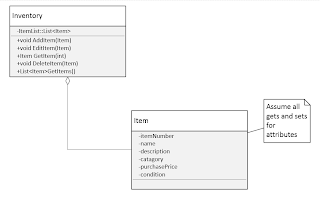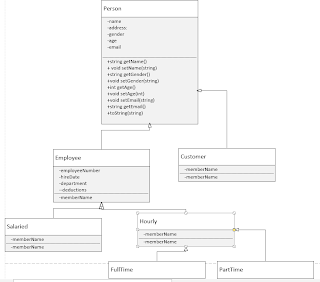I create a unit test to test the CalcualteGPA method in the GPACalculator. First right click on the solution and add a new test project.

Right click on the new Test Project. Add a reference to the project you want to test

The Solution should look like this

Add code to test the method
using System;
using Microsoft.VisualStudio.TestTools.UnitTesting;
using GradePointCalculator;
using System.Collections.Generic;
namespace UnitTestProject1
{
[TestClass]
public class UnitTest1
{
GPACalculator gp = new GPACalculator();
[TestMethod]
public void TestMethod1()
{
//addGrades
CreateGradeList();
//call the method
double gpa = gp.GetGpa();
//assert the value you expect, and
//the actual value. (rounded because hard to match all the decimals)
Assert.AreEqual(3.5, Math.Round(gpa, 2));
}
private void CreateGradeList()
{
//add a couple of grades
Grade g1 = new Grade();
g1.ClassName = "ITC 110";
g1.Credits = 2;
g1.GradePoint = 1;
gp.AddGrade(g1);
Grade g2 = new Grade();
g2.ClassName = "ITC 220";
g2.Credits = 5;
g2.GradePoint = 4;
gp.AddGrade(g2);
}
}
}
Go to the Test menu in Visual Studio and choosr tun all tests. A test explorer will show up. Here is the result for a passed test

I changed the value so that the result will fail. Here is a failed result





